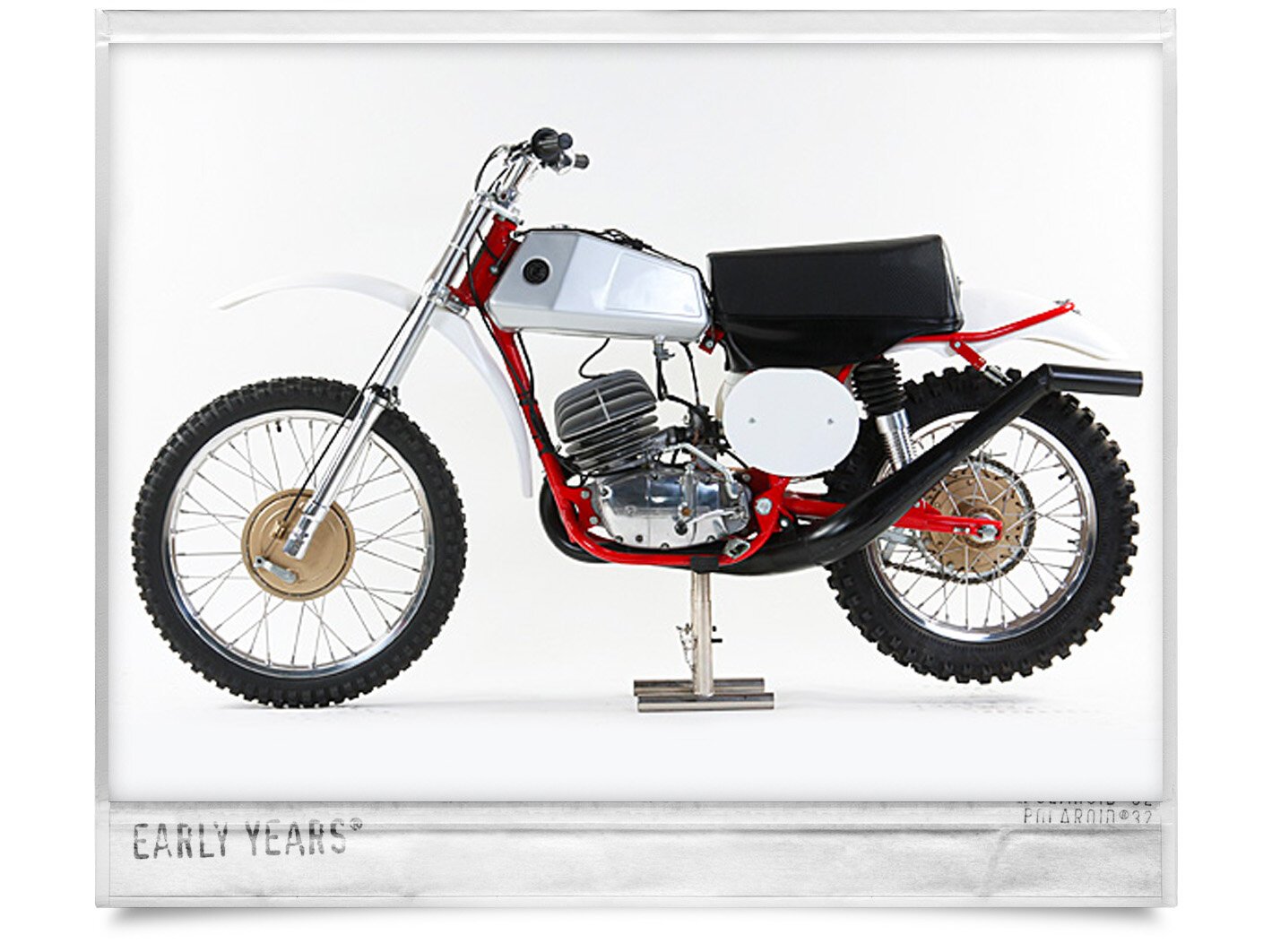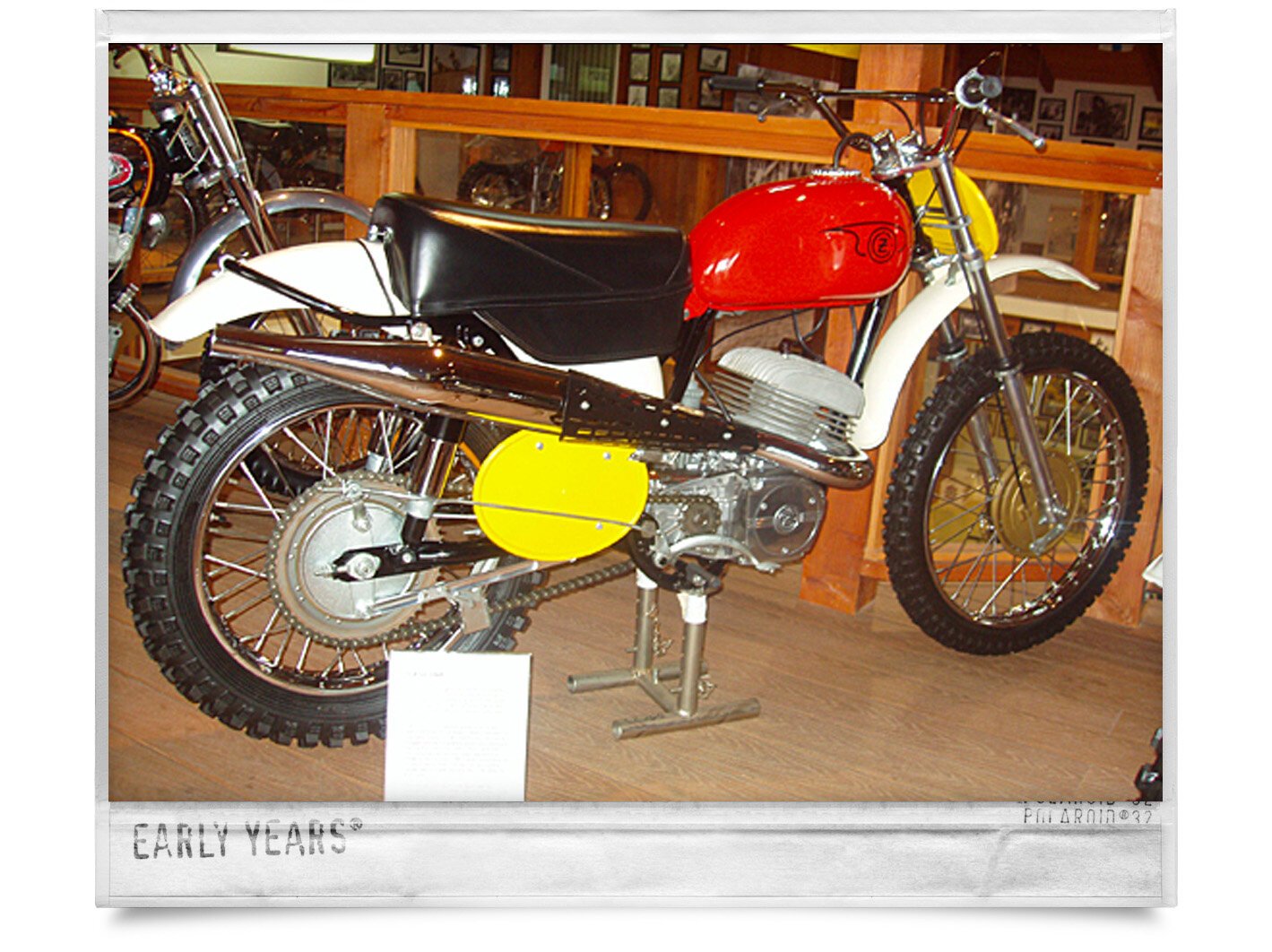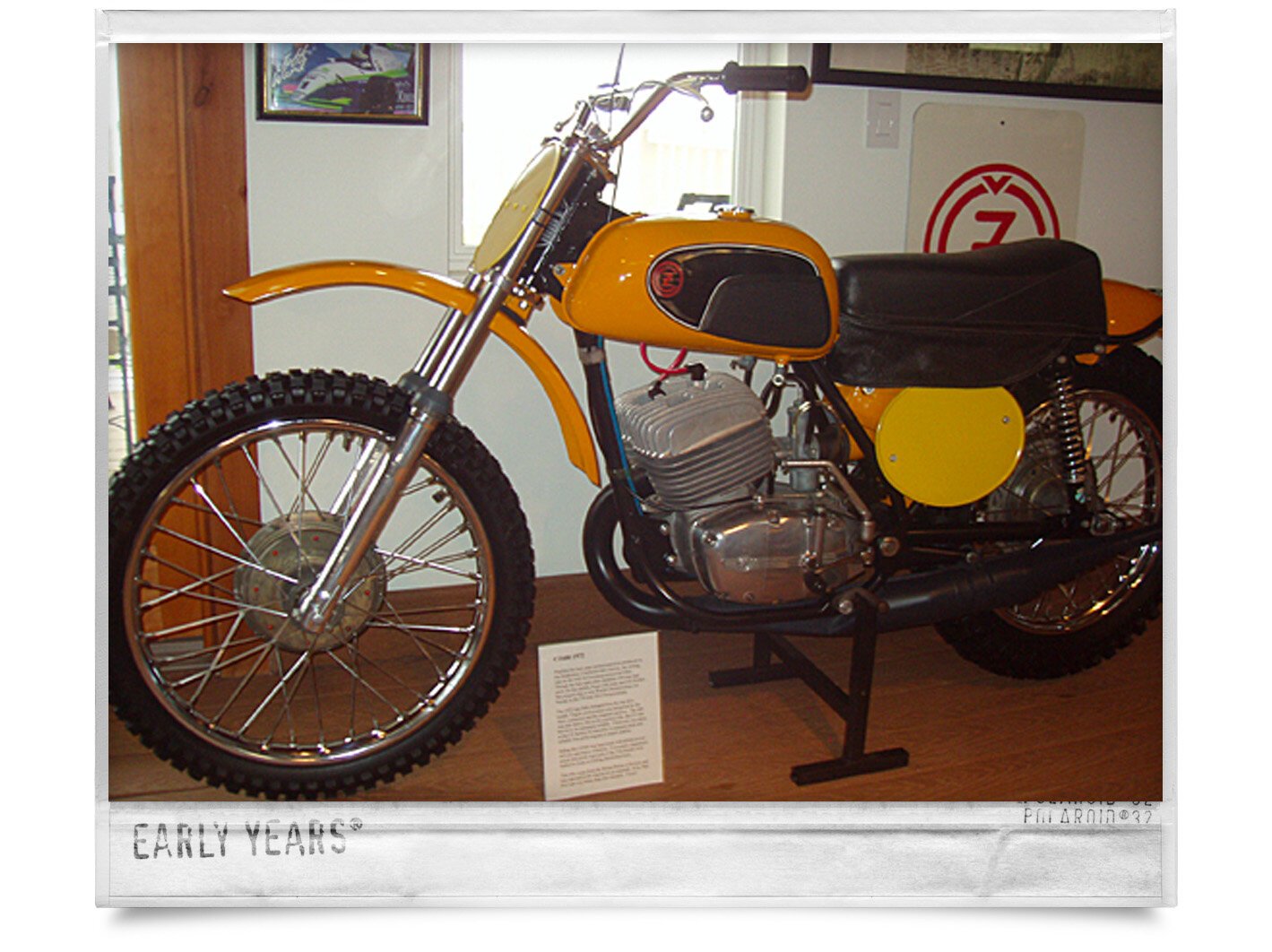CZ250 TWIN PORT / 1965
CZ’s twin port 250 and 360 were the final nails in the coffins of the four stroke behemoths when the Czech factory rewrote motocross history in the mid 1960s.
The twin port 250 was a replica of CZ’s own works GP bike, yet marked the close of one era for CZ as the new 360cc set the factories rules of motocross motorcycle technology for the next decade. Check out the CZ360 in the museum to compare the newer technology compared to the 250 twin port.
In 1964 Joel Robert won the 250 World Championships on a bike very similar to this example. The next year, Russian rider Viktor Arbekov echoed Robert’s ’64 title win to elevate CZ to the high ground that Husqvarna’s Torsten Hallman had previously enjoyed.
According to the seller, this machine was restored by Joel Robert’s factory mechanic. This is an example of the myths that often surround the purchase of a Czech motorcycle. When buying a CZ, caviet emptor (buyer beware) as the history of the Czech motorcycle can be sketchy and so can the characters that trade them.
CZ250 FALTA REPLICA / 1975
In 1975 there was host of Japanese entries into the highly competitive motocross market. The CZ factory in Czechoslovakia responded with a machine that closely resembled the “works” bike the Jaroslav Falta had “almost” won the ’74 250cc World Championships with.
Let me explain the almost! Moving into the final round of the 250cc World Championships in Wohlen, Switzerland, Russian KTM rider Gennedy Moiseev held a slim 16 point lead over Falta. In what appeared to be coop, Russian riders Pavel Rulev, Viktor Popenko, and Rabalcenko used a racing strategy that constituted a race-long assault on Falta culminating in an incident that became known as the “Popenko T Bone!” Many spectators claimed that the Russians intentionally rammed Falta, forcing him to crash in both motos. Falta would fight back to win both moto’s, but the Russians would then protest the results, saying that Falta had jumped the starting gate. The FIM jury sided with the Russians and relegated Falta to second place for the race and out of the 250cc World Championship by a couple of points!
In the summer of 1974, Falta traveled to America to compete in a few Inter-Am events and also at the LA Coliseum Superbowl of Motocross. In front of 65,000 spectators, Falta would take his CZ to first place beating all of the American hero’s including Roger DeCoster. CZ was back!
The ’75 Falta model featured the key components of the factory bike and also satisfied CZ’s core values of performance and indestructibility. Standard features included the alloy-bodied airshocks that were unique and effective, magnesium hubs, lipless alloy rims, and a hand-made leather belt that secured the alloy fuel tank. With the single-tube red frame and improved styling, the Falta had shaken the agricultural look that the CZ’s were know for.
The 1975/76 CZ250 and 400 Falta Replicas were nearly identical.
CZ360 / 1969
Arguably the best open class motocrosser available to the public in 1969, the CZ360 was still a beast to ride. Hampered by a dual plug ignition that would jump timing often, a Jikov carburetor that flooded easily, and heavy vibration, it was still better than most.
The Czechs were rightfully proud of the reliability and construction of CZ models. When I attended CZ mechanics school in 1969, Stan Cerney, the instructor bragged how the CZ gearbox would easily withstand full-throttle, clutch-less, stab-it-into 1st gear starts. I still remember the morning, lunch, and afternoon breaks at the CZ school. Mr. Cerney would bring out a case of beer to share with the class during these breaks, and of course, the more beer – the better the CZ’s were.
This example was raced in the desert and when I purchased it from my friend, Matt Hilgenberg, it was what we call “a nearly perfect core” that was ready for restoration. Vintage Iron did the restoration.
CZ400 / 1972
Possibly the best open motocrosser ever produced by the Strakonice, Czechoslovakia factory, the writing was on the wall for European motocross bikes. Though the best open class Japanese offerings had yet to hit the market, Roger DeCoster and Joel Robert has jumped ship to win World Championships for Suzuki in the 250 and 500 Championships.
The 1972 was little changed from the late 60’s model. Engine performance was hampered by the Jikov carburetor and the magneto ignition. The 400 was also heavy, but on the positive side, the CZ was known to be extremely reliable. Extra care was taken at the CZ factory on assembly to measure parts and actually blue-print engines to assure quality.
Riding the CZ400 was hard work with abrupt power delivery and heavy vibration. Fortunately suspension action was good, especially if the Tria shocks were traded for Koni or Girling shock absorbers.
This bike came from the Bertus Bertus collection and was reported to be original an un-restored. Is so, they don’t get any better than this example. Enjoy!




